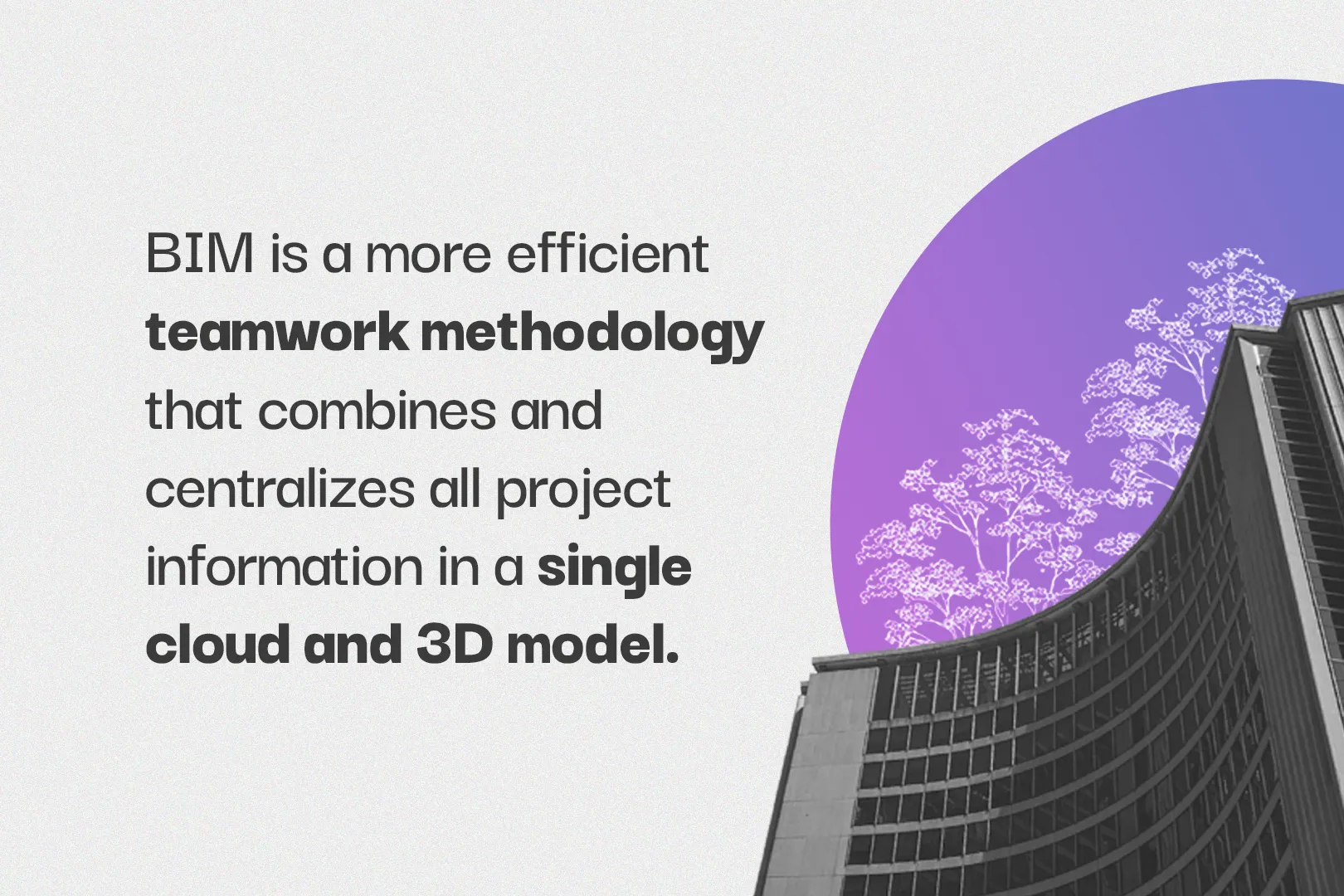Better Sessions #8: BIM Management Workshop
SHARE POST
Building Information Modeling (BIM) is a powerful tool that has revolutionized the architecture, engineering, and construction (AEC) industry. But still, even in today’s world, many architects are not familiar with the ins and outs of BIM management.
But, at BetterPros, we believe that playing to your strengths is not a sustainable strategy. Constant on-the-job training is part of our core philosophy; if you have an area where you’re weaker, then it’s the perfect opportunity to continue learning. And who knows? You may even pick up a new career path or favorite skill along the way! That, for us, is the motivation behind our monthly BetterSessions: a cycle of webinars where experts in the field share their tips and tricks to help other architects level up their skills.
This month’s speaker, Andrea Videla, gave a masterclass about the importance of BIM in today’s world.
Let’s take a look at what she had to say.

BIM Basics
Building Information Modeling (BIM) is a process that leverages digital technologies to design, construct, and manage buildings and infrastructure. BIM has become a critical tool for architects, engineers, contractors, and facility managers to collaborate on the design and construction of a building project.
Why? Because it keeps errors down, minimizes waste, and makes the construction process flow more smoothly. This can result in better project outcomes and reduced overall costs.
Another central component of BIM is management, which involves using software and other data-led processes to efficiently manage the data generated during construction. These BIM management tools help ensure that information is available to all stakeholders so they can make effective on-the-fly decisions.
Another key benefit of BIM is improved collaboration between all parties involved in the project. It helps avoid “siloing,” or the tendency for people and teams to work in isolation because everyone is using the same information.
In turn, this helps reduce confusion, increase accuracy, and help speed up the construction process. With this increased communication, teams are less likely to make mistakes.
Another place where BIM excels is quality control, because BIM management tools allow for more accurate and consistent work, increasing quality standards across the board. Also, since everyone has access to the same information, there are fewer misunderstandings, which also leads to improved outcomes.
Another cost-reduction feature of BIM is the ability to reduce work duplication, identify issues early, and make on-the-fly adjustments. This not only helps speed the construction process along but also brings errors down, which can significantly improve the bottom line of a construction project.
In Andrea’s Words
Of course, Andrea had a personal take on BIM Management which is worth sharing, because seeing the real-life impact of BIM speaks louder than any theory:
“As architects, we have always experienced problems in the design or execution of a project, mainly because we are not used to applying an effective methodology that ensures the success of our projects.”
She continued:
“In Latin America, it is normalized as “acceptable” to have construction “errors” and budget gaps, when in fact, we should be changing the way we work to make our buildings more efficient and sustainable. This is where BIM comes into the picture.”
Overall, BIM is a more efficient teamwork methodology that combines and centralizes all project information in a single cloud and 3D model.
This method, which is widely used in the USA, Canada, the UK, etc., reduces the occurrence of future problems and disruptions thanks to software tools such as Navisworks, that allow us to anticipate future inconveniences before construction begins.
This effective technique is becoming more widely known and considered around the world, and hopefully could be applied globally, to reduce conflict, costs, and carbon emissions and improve the energy efficiency and sustainability of new buildings.
Andrea concluded:
“As an architect, I had the opportunity to be part of several teams using the BIM methodology in the US, learning new ways of working, designing, and building”
And not only that, Andrea says it’s helped open up professional doors for her, allowing her to work on better projects overall.
Summing Up
In conclusion, BIM is a tremendously powerful tool that is already making waves in the global construction industry architects and other AEC professionals must understand and embrace this technology to bring about better outcomes, reduced costs, and improved sustainability.
And also, we’re overjoyed that we’re able to share the knowledge of this vital methodology with architects who are looking to expand their professional horizons.
At BetterPros, we couldn’t be happier about the possibilities that BetterSessions bring. As we said at the beginning, why rest on your laurels when you can keep learning and become a better version of yourself?
That’s what we’re all about.
